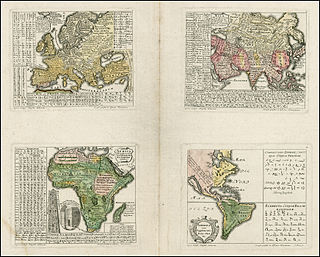Written language
The written language , including written language called, refers to a system of signs that is not formally defined, but obeys specific norms and in writing present form. Another form of expression in which language is realized is spoken language .
Written language manifests itself in texts . At the beginning there is always the word, the thought, the idea, which, however, are only partially accessible in their raw state. On the other hand, documents or papers related to writing research are available in their physical state.
Written language is a cultural product that has to overcome illiteracy as a prerequisite, i.e. it is based on the development and use of characters . Its use as a communicative medium requires writing and reading skills , for example as writing in a visual-graphic perception in the sense of writing , reading or the use of writing materials and writing media.
Development and conditions of the written culture
The vernacular writing culture in Europe experienced an upswing from the 13th century onwards with the flourishing of urban culture. This upswing contributed to the fact that not only the nobility and clergy, but also other strata of the population was given access to the written language. In the 14th and 15th centuries, the signals of conceptual orality ( spoken language ) gradually disappeared , which were replaced by the appearance of conceptual writing ( literacy ). The driving force behind this was the invention of printing with movable type, which allowed books and newspapers to be distributed in unprecedented editions and used as archives. In connection with this, a typical media usage has developed up to the present day , the change of which is documented by the written language.
Nowadays it is often neglected which cultural, sociological and temporarily situational background the writer had at the time of the reformulation of language in writing. Background knowledge is very important in order to understand the author's intention. Furthermore, little attention is paid to the “indications of writing” (writing style , motor skills , writing tools ). Instruments such as the typewriter and the computer have made the recording of spoken language much easier, since they can be used to record it in writing almost verbatim.
Relationship between written and spoken language
The different relationship between spoken and written language in historiography is reflected in three different positions in which the dependence of written language on spoken language is discussed.
- dependency approach
- describes the written language as secondary, i.e. H. depends on the spoken language. The written language only serves to record spoken language. Written language is always fictional in its form of representation, as it uses a different medium . Originally it was in spoken form.
- autonomy-theoretical approach
- means that the written language is removed from its secondary function and equated with the spoken language. Its representatives share the view that spoken and written language are two different forms of language. In addition, they are of the opinion that dealing with written language expands the individual's cognitive activity, which can have an impact on his use of the spoken language.
- relativising approach
- weighs both positions against each other and recognizes both the relative independence of both forms of language, as well as the connections that exist between them.
The three-phase thesis (plan - formulate - revise) is becoming more and more important , since questions about the linguistic formulation of written language are always dealt with only after the mental planning has been completed.
See also
literature
- Elisabeth Feldbusch: Written language: Investigations into its development and the basis of its theory . de Gruyter, Berlin (inter alia) 1985, ISBN 978-3-11-010219-2 .
- Britta Günther, Herbert Günther: First language, second language, foreign language: an introduction. Beltz-Verlag, Weinheim 2007, ISBN 978-3-407-25474-0 , on written language: p. 42 ff.
- Claudia Osburg: Spoken and written language. Pronunciation disorders and written language acquisition . Schneider Verlag GmbH, Hohengehren 1997, ISBN 978-3-87116-894-9 .
- Margarete Ott: Development of conceptual writing skills in a multilingual context . In: Ursula Bredel , Hartmut Günther, Peter Klotz, Jakob Ossner, Gesa Siebert-Ott (Eds.): Didactics of the German language. A manual. 1st subband. Paderborn 2003, ISBN 978-3-8252-8237-0 .
- Peter Stein: Writing culture. A story of writing and reading. WBG, Darmstadt 2006, ISBN 978-3-534-15404-3 .
- Thomas Tinnefeld: Deficiencies in the distinction between written and spoken language in German as a cause of errors in the written foreign language use . Shaker, Aachen 1999 (Language & Culture), ISBN 3-8265-4942-2 .
Web links
Individual evidence
- ^ Karl-Ernst Sommerfeldt , Günter Starke, Dieter Nerius (eds.): Introduction to the grammar and orthography of contemporary German. Bibliographisches Institut, Leipzig 1981, p. 23 f.
